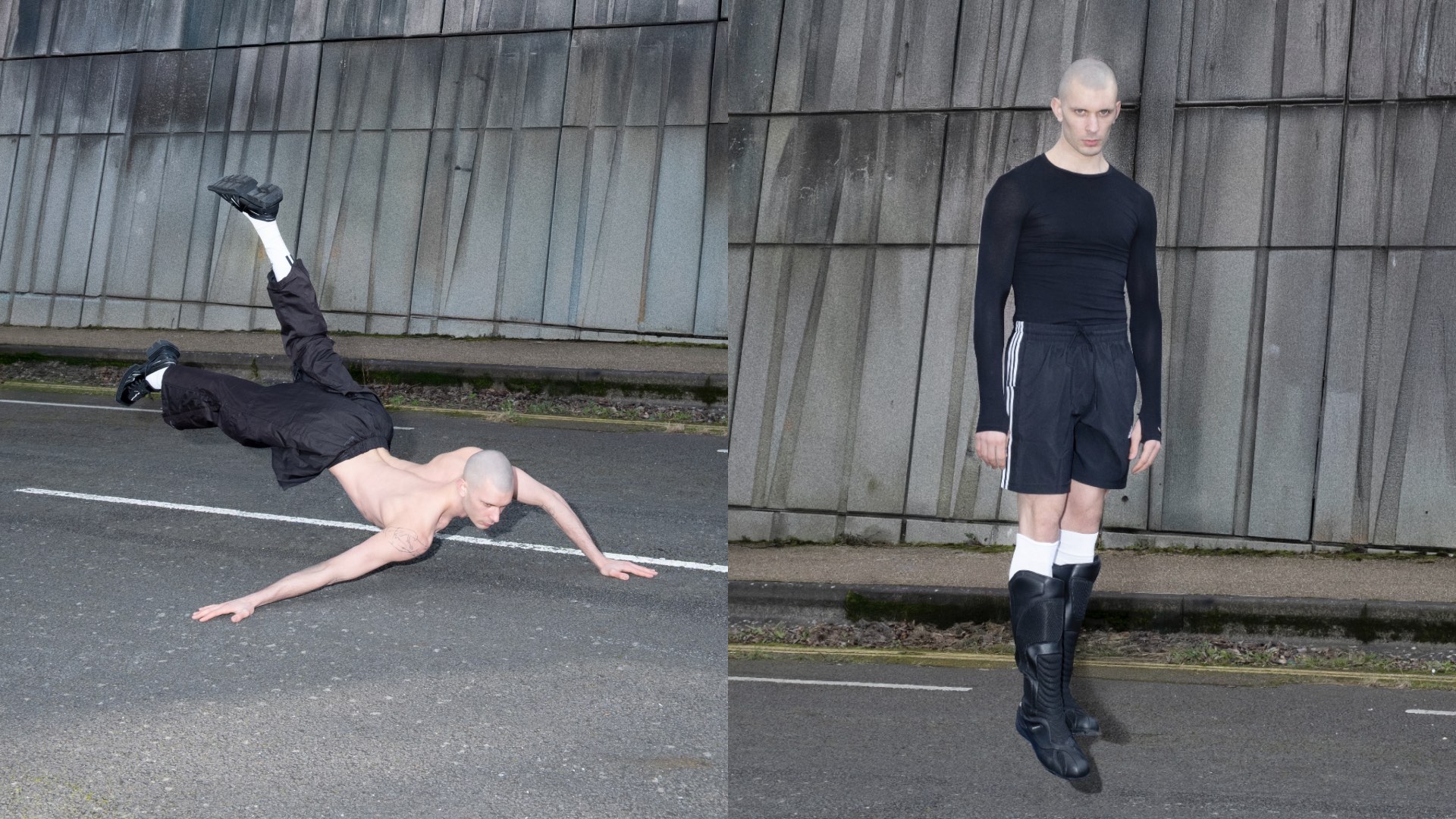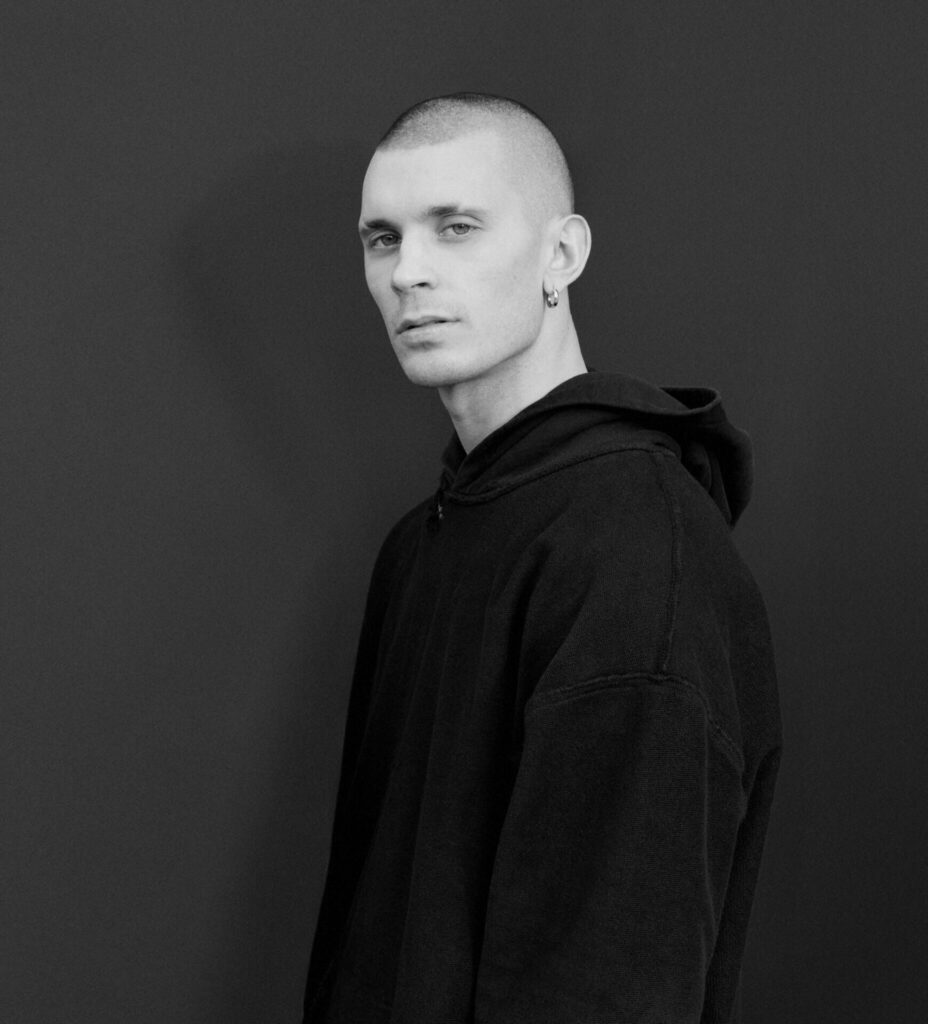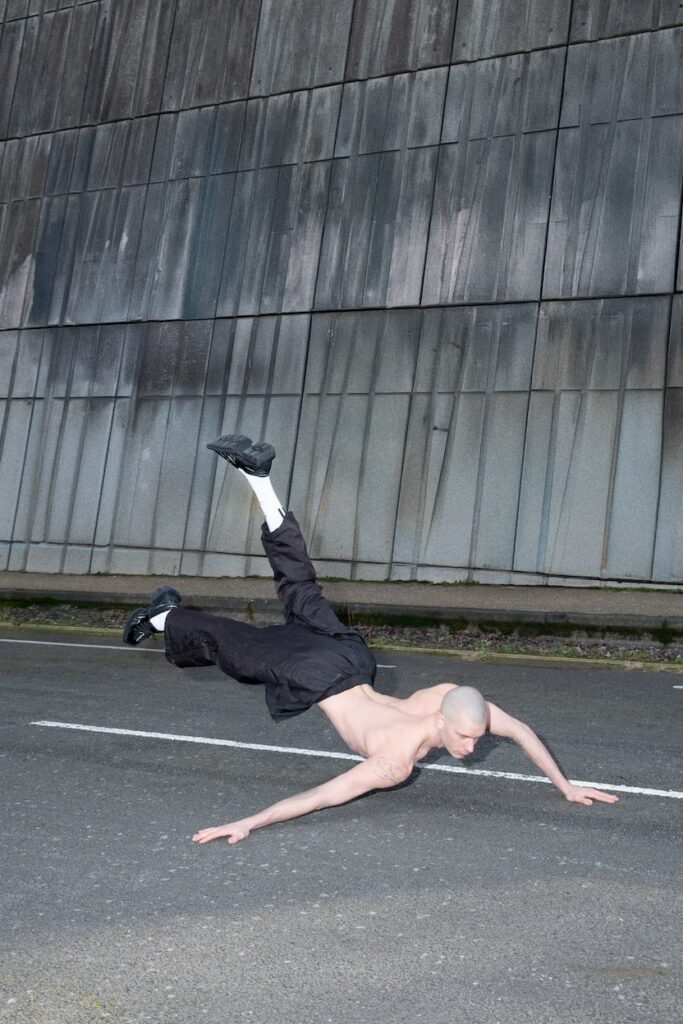Queer, non-binary movement artist Lewis Walker on premiering their new show Bornsick with Serpentine
"When it comes to story, it’s less about linear narratives and more about what I advocate for" says the artist, in conversation with Kostas Stasinopoulos, Curator, Live programmes at Serpentine

Lewis Walker (they/them) is a London-born queer, non-binary movement artist. Their work spans theatre, film, fashion, music, and the commercial sector. Ahead of Serpentine‘s premiere of Bornsick, a new performance by the choreographer and dancer, staged at the Round Chapel, in London on 21-22 May, the artist sat down for an in conversation piece for Attitude with Kostas Stasinopoulos, Curator, Live programmes at Serpentine. Co-commissioned by Serpentine and EAF (Edinburgh Art Festival), Bornsick will examine the human condition and travel to Scotland in August 2025 at EAF25.
KS: I’m very happy to have this conversation with you in anticipation of Bornsick, your first major performance commission, and so excited that it premieres with Serpentine in London before it travels to EAF (Edinburgh Art Festival) in August. I wanted to start by asking you how did you first start in the world of gymnastics? You must have been quite young?
LW: And likewise, happy to be here! I was six when my best friend and I went to a gymnastics summer camp. At the end-of-camp showcase, I remember asking if I could do a somersault —something the coach had prohibited. But, surprisingly for me, I did it anyway. That moment got me scouted and I ended up joining the squad.
At the time, I was unknowingly a very queer femme child, and my mum had just been diagnosed with cancer, so there was a lot of anxiety and confusion around me. I initially resisted the idea of joining and being away from my mum, but as soon as I saw the Lycra leotards and shorts, I was completely hooked.

What is your first memory of dance? Whatever dance may mean.
Dancing is my earliest memory. I used to watch music videos from the ’90s — Spice Girls, Brandy, Britney, *NSYNC, Christina, just to name a few — as well as my older sister Leah, and then get inspired by all the dance moves. I’d play their CDs in the kitchen, which had a small section of tiles by the cooker that was the “dance floor.” I’d spend hours improvising routines there, especially to ‘Afrodisiac’ by Brandy.
Amazing! So were you learning their choreographies or creating your own?
Always creating my own, I never had much interest in learning other people’s movements, I just enjoyed the music and how I would respond with each iteration of playing the song. Kind of similar to what I do now, fixing exact choreography on my body doesn’t give me joy, but improvising does.
How have acrobatic gymnastics shaped the first part of your life? This sport is also choreographed in a way right?
Gymnastics was the perfect mix of escapism and obsession — exactly what I needed at the time. Even before my teens, I knew I was different from young boys. The questions and name-calling around my sexuality and gender started before I even really knew what being gay meant. But once I began building an identity as a gymnast, it shifted how people saw me. Suddenly the focus wasn’t on my gender or how I expressed myself, but on my physical abilities.
Training gave me a seriously thick skin. I was tough, focused, resilient — and kind of surprisingly, really passive. Being a strong athlete means handing yourself over to your coaches, trusting them to take you where you need to go. So by the time I retired at 21, I was driven and had a great career behind me — but I was also pretty codependent, and shaped to be flexible to other people’s direction.
And yes — acrobatic gymnastics is choreographed. Each routine is a 2-minute-30-second performance blending dance, strength, balance, and dynamic elements. I competed in a mixed pair category: a male base and a female flyer.
There’s a lot to unpack about the type of conditioning, competing and performing that you were required to do and be the best at from a very young age. How do you get ready for a new work?
In terms of the physicality of the project, I begin with the concept, theme, and narrative. From there, I start to imagine a physical representation of the show, often accompanied by potential music or sound clips. Once I have a sense of the world I want to build, I head into the studio to test whether the physical ideas are actually achievable.
For example, in my last show, I wanted to hold a durational box split suspended between two chairs naked. When I first tried it, I realised it was possible for the duration I had in mind — but only with consistent training, or I would really hurt myself.
I spend a lot of time laughing at myself in the studio, wondering why I take on such physically demanding and ambitious tasks. When I had a coach, at least there was someone else to roll my eyes at — now it’s just me.
Once the structure becomes clear, I develop improvisation tools to build durations of dance. From there, I move into the stages of creating, rehearsing, and training.
How did Bornsick start to materialise? What is Bornsick?
Well, this felt like quite an unusual beginning of a project. It was late September when you proposed the commission, and I hadn’t a concept for a show in the pipeline, so I began figuring out what felt important to me at the moment. I had been getting quite obsessed with the conspiracy theory that shapeshifting reptilian aliens were controlling the Earth. Bear with me, I have always been very fascinated and scared of reptiles, and felt a natural embodiment of them in my movement language as an improviser. I don’t believe that I am a reptilian alien, but it highlighted my experience as a queer person and the constant shapeshifting of character and expression depending on time and environment. Bornsick is basically the experience of being a queer child, born into a society where your existence is othered and can be condemned or confused. When things like your gender or sexuality do not fit into the status quo, how do we as a community use references and sub-communities of queerness to form identities. Bornsick is a representation of the back and forth shapeshifting experience of humans through conditioning and re-learning.

What is the role of collaboration in your practice? Both in works like Bornsick but also in other areas like Move.Hypno for example, the class you lead together with hypnotherapist Michele Occelli?
Collaboration plays a crucial role in my practice — well, at least when there’s funding for it. Putting on a show is inherently collaborative; it simply can’t happen otherwise. From set design, lighting, costumes, music, dramaturgy, rehearsal direction, production, curation, and of course, working with other performers — every part relies on collective input.
I entered the dance world at 22 through the commercial sphere — music videos, fashion, and advertising. Without realising it at the time, I was building a network of collaborators and relationships that would later feed directly into my personal practice. For instance, Oliver Coates, who composed the score for Bornsick, was part of one of my very first dance jobs with artist Hannah Perry. I really don’t have a practice without collaboration, even in its most essential form — combining movement with music.
I’ve also been deeply interested in bringing non-professionally trained dancers or performers onto the stage. Performance has been such a rewarding experience in my life, and I’ve often wondered how I might share that with people who haven’t had access to formal training. One show was choreographed on my partner, a trained dancer, and my family — all non-dancers — and another on my neighbours, who include a filmmaker/artist, a DJ, and a hypnotherapist. These projects have been some of the highlights of my career.
That’s also how my collaboration with hypnotherapist Michele Occelli began, leading to our workshop Move.Hypno, which merges movement and hypnotherapy. Having someone to work with keeps the engine running — we feel a mutual responsibility to show up, and the creative momentum is something we carry and share between us. I don’t really believe in the idea of a “solo” career. We’re always being supported, supporting others, or in some form of shared practice.
I really appreciate how you hold others in your mind and in your practice, I feel it’s one of the most important traits you have as an artist. What are the stories that currently feel important to you? What is your relationship to storytelling?
Something that feels like a recurring narrative — and almost an echo chamber — within the queer community is the conversation around gender norms and heteronormative standards of living. When I started my degree, I began using they/them pronouns and identifying as non-binary. I didn’t anticipate just how affirming it would feel to no longer be referred to as “he.” I don’t think I fully understood how loaded a pronoun could be, but I immediately felt a weight lift and a shift in the expectations I’d placed on myself.
Acknowledging that I exist outside the gender binary made it clearer how much I had previously shaped myself around how others saw me. Instead of simply living, I realised I had often been performing — trying to fit roles that aligned with societal expectations. Now, identifying as non-binary feels much more about how fluid and accepting I can be with myself, rather than the pronouns someone uses for me.
So when it comes to story, it’s less about linear narratives and more about what I advocate for. The ideas I keep returning to — dismantling gender norms, challenging heteronormativity, and confronting systems like patriarchy and fascism — are what shape my work and thinking.
I don’t necessarily approach art-making with a story in mind. I usually channel what feels urgent or relevant, and the narrative is something the audience creates for themselves.
Can you describe a time when you were moved by a performance, a choreography, a movement or a gesture?
Yes. Last year, I choreographed for the Italian national team in acrobatic gymnastics, and the movement that was created, performed, and rehearsed while I was there deeply moved me. I ended up crying for most of the journey back to the UK.
I grew up in an environment and training regime where success was tied to intense drive, grit, and an almost obsessive determination. My ethics and moral stance have shifted since then — I now seek softness and paths of least resistance, allowing change to happen naturally. But witnessing that level of raw desire and tunnel-vision focus stirred something in me. It was like a part of myself that had been dormant was awoken.
I feel like that type of power and desire is transferable, to art, politics, protests, it stirred something inside of me, gifted me a renewed confidence.
That’s very true. What do you think is transferable between performer and audience during a show? What makes those moments special for you?
LW: When I was about 13 or 14, training as a gymnast, I wanted to make audiences cry or feel moved. Humans often block emotions — whether for self-preservation, trauma responses, or a fear of vulnerability — and even as a child, I was trying to understand what was really going on beneath the surface. I wanted to cut through that lack of clarity in interpersonal relationships.
As a teenager, I remember not really having access to my emotions. The ability to cry just switched off. I became quite the “save the tears for the pillow” kind of gal, and even now I cry quite rarely. Being a queer child, masking as a straight boy, meant that a whole side of my character had to sit dormant under the persona I was presenting. Performing became a way for me to access emotions I didn’t yet have the words, terminology, or even the psychological understanding for.
That’s what I think is transferable in art — this liminal space where something can move between people without needing to be clearly defined. It’s like offering the next chapter of liberation, both for yourself and for someone else. As a performer, I get to express something that sits outside normative communication. I’m not trying to be grandiose – as my housemate Sarah would say! – but truthful about what art gives me, even just as a viewer.
I don’t think it matters what you’re trying to say, as long as you’re being brave with the work. People will take it and apply it to their own experiences. During performances, I don’t necessarily feel my relationship with the audience in the moment — the experience is so heightened and physically full-on — but the special moments happen after: in conversations, when someone references the work in a dissertation, a presentation, or even an Instagram post. That’s when it feels gratifying, like the work is living on through other people.
What do you hope to achieve through your practice in the near future?
My experience as a movement practitioner, teacher and the collaboration I have with Michele Occelli, is where I find most joy. The immediate transfer of knowledge and the service role of possibly improving people’s lives, either long term or just in that moment, is what I know I am here to do.
I love movement and performance, and what I am aiming for is to bridge the gap of performances, like Bornsick, and the healing potential that is offerered during movement workshops. I want to build on the physical practice, refining an improvisation technique that I can coin, lean on and share within workshops and new works, and start to prepare for works with larger casts.
